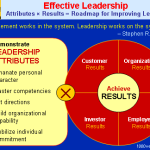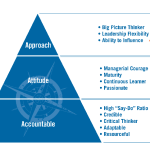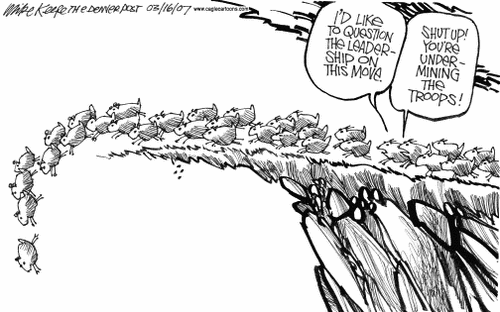“Innovation distinguishes between a leader and a follower” – Steve Jobs
Someone I know who manages a small team managed to get on a leadership course at work recently, and had high hopes that it might help propel them towards promotion into a higher management grade. Alas, the course in question turned out to be less than an MBA, and in fact less than any requisite skills for leadership. On the first two training courses, topics covered were very basic stuff about knowing your staff (learning styles, Maslow’s hierarchy of needs and suchlike), then a whole day on English grammar – yes, I kid you not! Obviously you couldn’t lead your troops if your apostrophes were not correctly positioned…
As regular readers will know, I have a Henley MBA, during which course time and effort was expended studying leadership, management and the overlap between the two. As you will gather from the pictures below, there is any amount of theory and jargon that can be brought to this subject but I don’t want to bore you with a lecture – even if it’s one the first person mentioned would probably benefit from more than grammar, so instead I’ll give you a few personal thoughts on the subject, and in particular about leadership style – though you will get a smattering of the various theoretical research in this area here.
Also in the news this weekend, Sol Campbell stated in a quote from his autobiography that had he been white he would have been England football captain for a full 10 years rather than the 3 he was given. This is of course highly debatable and designed to stir up controversy to sell copies of his book, but a more apposite debate might be about Campbell’s personality; he is said by his peers to be a quiet, introspective sort of chap rather than a rabble-rouser. That style might be effective in some circumstances, but maybe for a football captain greater motivational skills were required, maybe the sort of player that is constantly talking and shouting to his colleagues and kicking arse when it needs to be kicked. I have no idea why Campbell was passed over, but for these purposes the style factor and how well a player fits the culture of the organisation is very relevant.
In essence, leadership to me is about being in a position of authority where you can influence the strategic direction of an organisation (bear in mind that for these purposes a “leader” does not have to be the very pinnacle of the organisation, but could be responsible for any part of it or even as a temporary stop-gap) though that may not require transformational change if the current direction of travel is successful and most appropriate. However, without building knowledge, information gathering and analysis you could not be assured that was the case. The essence of the role is this:
- Determine where it is now
- Determine where it needs to be by a given time
- Determine what steps are needed to get it from A to B and instigate planning for those steps
- Identify whose help and support will be required to achieve this transformation, internal and external
- Determine where they are now and where they need to be
- Identifying what actions need to be taken to get them to the right place in supporting change
- Implement changes and monitor results, adapting as required
- Motivating and changing the resource base to make things happen.
In short:
“Leadership is the capacity to translate vision into reality” —Warren Bennis.
Of course there is much more to it, but the key differentiator to the management process of delivering day-to-day is that a leader steers the right course and is proactive. More than that, a true leader has some element of the visionary about them, possessing a clear view of what the future needs to look like. So while any given leader will have operational responsibilities for performance in the here and now, you would always expect them to be casting an eye two or three steps ahead to ensure that progress will improve, and, conversely, to manage risks so the organisation is prepared for disasters.
I spend a good deal of my professional life in the healthcare sector, where board members have to cope with any number of demands and changes from government, commissioners and very many more organisations operating in that sphere. They can’t plan ahead since the whole ball park may have changed within a reasonable strategic horizon (even 2-3 years would be a major achievement, where for examine upstream gas and oil strategy typically requires planning up to 20 years ahead.) In fact, most struggle to plan 12 months in advance, and as a direct consequence the valuable time of directors is often taken up with “fire fighting” and levels of detail you would typically expect from managers further down the food chain. In my estimation, that is why the patient experience tends to improve in knee-jerks rather than as part of a smoothly controlled process.
Being a leader in that environment is radically different to being a leader of organisations in other sectors, but to a greater or lesser degree the qualities required will be similar. Some leaders are almost anonymous, but many do possess charismatic qualities and what the late Simon Hoggart called “bottom” or TATBTS (“the ability to be taken seriously.”)
In short, sometimes more important than their knowledge, competence and experience, maybe even than their reputation is the ability to provide clear guidance, to be heard and acted upon, and for staff to be empowered to go achieve the vision – though arguably knowing the individuals and which buttons you have to press to get them on board is a key component of that skill. A true leader will be a player of men.
For these purposes, “charisma” can be a clutch of relatively simple techniques to develop and does not require you to be a Hitler or Churchill. Consider these:
- Keep up good eye contact
- Develop a genuine smile.
- Have an open body posture
- Keep your hands apart with palms forwards or upwards and away from your face when talking.
- Stand up straight but be relaxed.
- Let people know they matter and you enjoy being around them. Nod when they talk, briefly touch them on the upper arm.
- In groups move around to appear enthusiastic, lean slightly forward and look at everyone in the group from time to time.
- Keep your messages simple to understand. Be slightly controversial and move beyond status quo
- When speaking, be clear, fluent, forceful and articulate, evoke imagery, use an upbeat tempo, occasionally slow for tension or emphasis
This analysis of styles provides some interesting ideas, indicating that there are many more ways than one to achieve this – and in fact leadership is as unique as the individuals who provide it. But this list would probably be agreed by all:
Bad Boss
- is dogmatic and inflexible
- is subjective
- is feared
- is self serving
- sticks strictly to the “company line.”
- communicates to impress their superiors
Good Boss
- delegates
- trusts staff with minimal supervision
- is supportive and encourages initiative
- encourages staff to work together towards common goals.
- has honesty and integrity
- their motivation not just based on gain for themselves or power as an end in itself
- has self confidence
- has belief in the abilities of others
- has sensitivity to others feelings
- is fair towards all
- has drive: this encompasses achievement, motivation, ambition, initiative, energy, tenacity and resilience
- has relevant skills and knowledge
- has a positive mood
Surprising how often then that bosses seem to fit the first category rather than the second. But remember also that the leader only serves to make people feel good about themselves, as in this quote:
“A leader is best when people barely know he exists, when his work is done, his aim fulfilled, they will say: we did it ourselves” —Lao Tzu
It reminds me of the story of visitors to NASA headquarters exploring the building and talking to people they met, including a black cleaner who was mopping a floor. “And what do you do,” asked a visitor. “I help people get to the moon,” came the response.
In a growth situation that is easier to control, but it requires a different skill set to communicate effectively when a business is in transformation and/or retrenchment, jobs are at risk and morale is plummeting – even if the cost-cutting is part of a future modernisation plan with growth and improvement. At that point, every message will be scrutinised closely by staff, managers and external stakeholders alike – getting it wrong can have dire consequences, but equally saying nothing fuels rumour and speculation. It takes a strong leader to deal with this situation – not shying away from the facts but setting the right tone.
I was reminded of this at the recent speech given by the current CEO of the Royal Bank of Scotland, Ross McEwan, at which he set a clear tone to differentiate current strategy from the past excesses of Fred Goodwin‘s era and deal with a loss of £8.2bn by serving UK customers and meeting their needs, they being the people forgotten in the frenzied drive for profits. It was in many ways a brave speech, giving no false assurances but setting out that the underlying business remained strong and competitive, with jobs for branch staff to deliver excellence in customer service. Finding the right tone for the present circumstances and painting a picture of the future is the key to success, no matter how desperate things seem.
Many remember the J M Barrie play and subsequent films of The Admirable Crichton, in which the butler to an aristocratic family takes charge when all are shipwrecked on a deserted tropical island, to the point where he is referred to as “the Guv.” When the family is rescued and returned to their country seat in England, Crichton resumes his duties as a butler with nothing mentioned about the interlude when the rules of engagement changed. “Cometh the hour, cometh the man“, as they say. Leadership may well be thrust upon an unlikely person in different circumstances, but the measure is how they respond, the tone they adopt and how likely the people who deliver operational success are to follow them and reflect the positive mood.
Over the years I’ve met many competent leaders, plus a number who were anything but. The worst I’ve seen tend to be dazzled like a rabbit in the headlights, torn in many different directions and unable to provide clarity on any subject. The best rise above all objections and provide statesmanship; that is, while managing the many issues affecting any organisation, communicate confidence to its people and ensure morale remains high and productivity striving to improve.
Being a leader is perhaps most about having the antennae to identify what the current situation demands. Being too remote is as bad as being too close, but any leader worth their salt will make a point of being in touch with people at every level and understanding the mood at the coal-face, rather than accepting the word of lieutenants who may well not have spoken to the lowest-paid people to gauge mood or opinion. Simple things like that can make all the difference and avoid the perils of the “two-tier” company, whereby above a certain level of management everything looks rosy and full-steam ahead, while down in the engine room the iceberg is looming and disaster appears imminent.
The best leaders I ever met were actually both reflective and quietly-spoken Americans, who may well have shared some qualities with Sol Campbell in that respect:
- One gave me perspective in the form of quiet words, and also introduced me to the well-worn phrase “perception is reality” (this being the early 90s) before riding off into the sunset on his Harley. He demonstrated to me the value of clear understanding of the vision and being able to communicate it without being demonstrative or melodramatic. He could cut through pomposity in a flash with a well-directed question and get to the nub of the issue. That is one lesson I aim to emulate wherever I work.
- The other led by example. As sales director of what was then One 2 One, he flew in from California and proceeded to walk up Oxford Street asking at every phone shop for a phone on the O2O network. When sales staff tried to persuade this “anonymous shopper” that he should go for another network, he went back to the company and organised a meeting for all employees at which he announced in an impassioned speech that O2O would form its own retail network and that it needed their enthusiasm and dedication to differentiate their network and win loyalty from followers. The meeting was followed by a “beer bash” and at that moment he could have led employees to the moon and been sure they would follow him.
If you are a leader you will find your own way, whatever the theory and learned advice tells you, and rightly so. Yes there are techniques and you can be coached and mentored to improve leadership skills, but ultimately it is about knowing yourself and playing to your own strengths. And if you are a leader in the making, I wish you every success – just remember it is a human business and you need to take your people with you.













